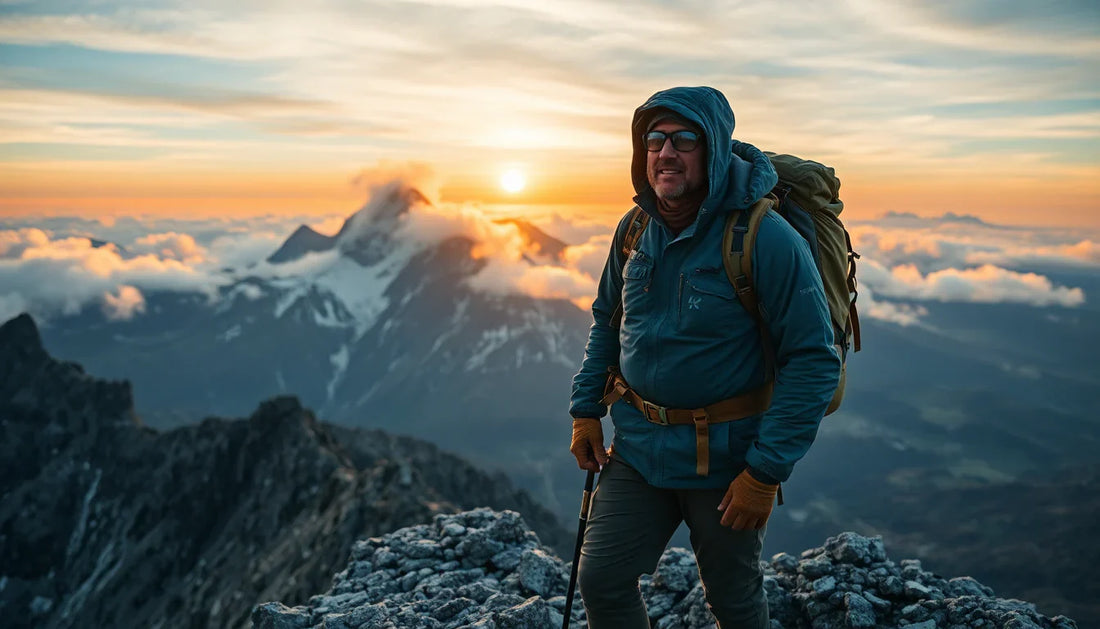
Conquer the Peaks: A Guide to Preparing for Camping at High Altitudes
Share
Embarking on a camping adventure in the mountains is a thrilling prospect, but it requires meticulous preparation to ensure a safe and enjoyable experience. When venturing into high-altitude environments, the challenges you'll face can be vastly different from your typical camping trips. From the physical effects of reduced oxygen to the unpredictable weather, high-altitude camping demands a unique set of skills and gear.
In this comprehensive guide, we'll explore the essential steps to prepare for camping at high elevations, equipping you with the knowledge and strategies to conquer the peaks with confidence.
Understanding High-Altitude Environments
High-altitude environments are typically defined as regions above 5,000 feet (1,500 meters) in elevation. As you ascend, the air becomes thinner, with less oxygen available for your body to function optimally. This can lead to a range of physiological effects, including:
- Increased breathing rate and heart rate
- Reduced physical and mental performance
- Increased risk of altitude sickness, such as headaches, nausea, and fatigue
- Dehydration due to increased water loss through respiration
Familiarizing yourself with these potential challenges is crucial for ensuring your safety and well-being during your high-altitude camping adventure.
Essential Gear for Alpine Camping
Packing the right gear is paramount when camping in the mountains. You'll need to consider specialized clothing, sleeping equipment, and protective accessories to keep you comfortable and safe.
Clothing Layers
Layering is the key to staying warm and dry in high-altitude environments. Start with a base layer of moisture-wicking fabrics, followed by insulating mid-layers and a weatherproof outer shell. Don't forget to pack gloves, hats, and socks designed for cold-weather use.
Sleeping Equipment
A high-quality sleeping bag rated for cold temperatures is essential. Look for bags with a comfort rating well below the expected overnight lows at your destination. Additionally, consider a sleeping pad with a high R-value (insulation rating) to provide extra insulation from the cold ground.
Protective Gear
Invest in sturdy, well-fitting hiking boots with good traction to navigate the uneven terrain. Sunglasses or goggles are crucial to protect your eyes from the intense UV radiation at high altitudes. Don't forget to pack a reliable headlamp or flashlight for navigating in the dark.
Health and Acclimatization Strategies
Adapting to the high-altitude environment is crucial for your well-being and safety. Gradual acclimatization is the best way to minimize the risks of altitude sickness and other health concerns.
Gradual Ascent
If possible, plan your trip with a gradual ascent, allowing your body time to adjust to the changing conditions. This may involve spending a night or two at intermediate elevations before reaching your final camping destination.
Altitude Sickness Awareness
Be vigilant in monitoring for symptoms of altitude sickness, such as headaches, nausea, dizziness, and fatigue. If you experience these symptoms, descend to a lower elevation immediately and seek medical attention if necessary.
Preventative Health Measures
Stay hydrated, eat a balanced diet, and get plenty of rest to support your body's acclimatization process. Consider talking to your healthcare provider about medications or supplements that may help mitigate altitude-related health risks.
Nutrition and Hydration at Elevation
Maintaining proper nutrition and hydration is essential for high-altitude camping. Your body will require more calories and fluids to function effectively in the thin air.
Specialized Diet
Increase your intake of high-calorie, nutrient-dense foods to meet the increased energy demands. Focus on carbohydrates, proteins, and healthy fats to fuel your body. Dehydrated or freeze-dried meals can be a convenient option.
Hydration Importance
Drink plenty of water throughout the day, as the dry air and increased respiration can lead to rapid fluid loss. Carry a reliable water filtration system or purification tablets to ensure a safe water supply.
Safety Considerations
High-altitude camping presents unique safety challenges that require careful planning and preparation.
Navigation and Communication
Familiarize yourself with the terrain and carry a reliable navigation system, such as a GPS device or map and compass. Ensure you have a way to communicate with emergency services, whether through a satellite phone or a personal locator beacon.
Weather Monitoring
Stay informed about the local weather conditions and be prepared to adjust your plans accordingly. Sudden changes in temperature, wind, and precipitation can create hazardous situations.
Emergency Preparedness
Pack a comprehensive first-aid kit and learn how to respond to altitude-related medical emergencies. Familiarize yourself with rescue protocols and have a plan in place for evacuating in case of an emergency.
Practical Camping Tips
Adapting your camping techniques to the high-altitude environment can make a significant difference in your overall experience.
Tent Setup
Choose a sturdy, well-insulated tent designed for cold-weather use. Properly securing your tent and using guy lines can help it withstand strong winds and heavy snowfall.
Cooking Considerations
Adjust your cooking methods to account for the lower boiling point of water at high altitudes. This may require adjusting cooking times or using specialized high-altitude cookware.
Energy Conservation
Conserve your energy by pacing your activities and taking frequent breaks. Avoid overexerting yourself, as the thin air can quickly deplete your stamina.
Conclusion
Conquering the peaks through high-altitude camping requires meticulous preparation and a deep understanding of the unique challenges you'll face. By following the strategies outlined in this guide, you'll be well-equipped to embark on a safe and rewarding mountain adventure.
Remember, the key to a successful high-altitude camping experience lies in thorough planning, adaptability, and a respect for the power of the mountains. With the right mindset and the proper gear, you'll be able to immerse yourself in the breathtaking beauty of the alpine wilderness and create memories that will last a lifetime.
So, pack your bags, lace up your boots, and get ready to conquer the peaks – your high-altitude camping adventure awaits!
